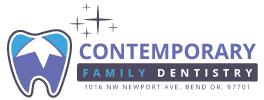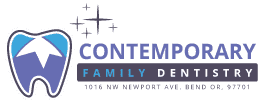Maintaining a healthy smile goes far beyond a simple brush-and-go habit. Dental professionals agree that consistency, technique, and a combination of tools are key to achieving optimal oral health. But with so much information available online, many people still wonder: What is the ideal oral hygiene routine?
An effective oral care regimen isn’t just about preventing bad breath or a few cavities—it plays a critical role in overall health, including reducing the risk of gum disease, heart problems, and even diabetes. To help you build the best possible routine, we’ve compiled expert recommendations and evidence-based practices that define the gold standard of oral care.
Why Oral Hygiene Matters
The mouth is a gateway to the body, and neglecting oral hygiene can have serious consequences. According to the American Dental Association (ADA), poor oral care is directly linked to plaque buildup, gum inflammation, and tooth decay. Left untreated, these conditions can escalate into periodontal disease, tooth loss, and even systemic infections.
Adopting the ideal oral hygiene routine not only preserves your teeth and gums but also boosts your confidence and contributes to your long-term wellness.
The Ideal Oral Hygiene Routine: Step-by-Step
Dental professionals recommend a multi-step routine that includes brushing, flossing, tongue cleaning, mouth rinsing, and more. Here’s what a comprehensive oral care regimen looks like, based on expert guidelines.
1. Brush Your Teeth Twice Daily
This is the cornerstone of any dental hygiene routine. Use a fluoride toothpaste and a soft-bristled toothbrush to clean your teeth thoroughly.
- Technique: Hold your brush at a 45-degree angle to your gums and use short, circular motions. Brush all surfaces—outer, inner, and chewing—for at least two minutes.
- Timing: Brush once in the morning and again before bedtime.
- Toothbrush Care: Replace your toothbrush or toothbrush head every 3–4 months or sooner if the bristles are frayed.
Both manual and electric toothbrushes are effective, though many experts favor electric toothbrushes for their superior plaque removal capabilities.
2. Floss Daily
Flossing reaches areas that brushing simply can’t. It removes plaque and food debris from between the teeth and beneath the gumline, reducing the risk of gum disease and cavities.
- Proper Technique: Use about 18 inches of floss, wrapping most around your middle fingers. Gently guide the floss between each tooth, forming a C-shape, and slide it up and down.
- Alternatives: Consider using interdental brushes or water flossers if you find traditional floss difficult to manage.
3. Clean Your Tongue
The tongue harbors bacteria that can cause bad breath and contribute to plaque buildup. Use a tongue scraper or the back of your toothbrush to clean your tongue daily.
- How to Do It: Gently scrape from the back of the tongue forward, rinsing the scraper between strokes.
- When: Clean your tongue after brushing and flossing.
4. Use an Antimicrobial Mouthwash
Mouthwash can reach areas missed by brushing and flossing and help kill bacteria, freshen breath, and protect against plaque and gingivitis.
- What to Use: Choose an ADA-approved mouthwash that suits your specific needs—antibacterial, fluoride-enhanced, or alcohol-free.
- When to Use: Rinse after brushing and flossing, usually once or twice a day.
5. Stay Hydrated and Eat Tooth-Friendly Foods
Good oral hygiene isn’t limited to tools and techniques—it also includes your diet and hydration habits.
- Drink Water: Water helps rinse away food particles and maintain saliva levels, which protect against tooth decay.
- Tooth-Friendly Foods: Crunchy fruits and vegetables like apples and carrots can naturally clean teeth and stimulate saliva. Dairy products like cheese help neutralize acids.
Avoid frequent snacking and limit sugary or acidic beverages, which can contribute to enamel erosion.
Pro Tip: “Chewing sugar-free gum for 20 minutes after meals stimulates saliva production and helps clean teeth naturally.”
6. Replace Your Tools Regularly
Old toothbrushes and worn-out floss picks can’t do their job effectively. Replace your toothbrush every 3–4 months, and keep your floss fresh and clean.
7. Visit the Dentist Twice a Year
Even the best home care routine needs to be paired with professional dental checkups. Dentists can detect early signs of decay, gum disease, or other oral issues that may not yet be visible or painful.
- Checkups: Include exams, X-rays, and professional cleanings.
- Frequency: At least every six months or as recommended based on your oral health status.
Regular dental visits also provide an opportunity to refine your routine based on personalized advice from your provider.
Tools That Can Improve Your Routine
Numerous dental care tools are designed to make your oral hygiene routine more effective and efficient. Here are a few expert-recommended options:
- Electric Toothbrushes: Brands like Philips Sonicare and Oral-B offer timers and pressure sensors for optimal brushing.
- Water Flossers: Devices like Waterpik are excellent for people with braces, implants, or tight spaces between teeth.
- Tongue Scrapers: Tools from companies like Dr. Tung’s are designed for effective tongue cleaning.
- Mouthwash: Use therapeutic mouth rinses approved by the ADA, such as Listerine Total Care or Crest Pro-Health.
Incorporating these tools into your daily routine can elevate your oral hygiene to a professional level.
Mistakes to Avoid
Even with the best intentions, many people fall into common oral care pitfalls. Be sure to avoid:
- Brushing too hard: This can erode enamel and damage gums.
- Skipping flossing: Plaque buildup between teeth is a major cause of gum disease.
- Using the wrong products: Always look for the ADA Seal of Acceptance on oral care products.
- Neglecting hydration: A dry mouth increases your risk for decay and bad breath.
- Infrequent dental visits: Only a dentist can detect early signs of issues that may be hidden from view.
Oral Hygiene for Different Life Stages
Different age groups have different needs, and your oral hygiene routine should evolve accordingly.
- Children: Emphasize proper brushing and monitor for signs of cavities. Consider fluoride varnishes and dental sealants.
- Teens: Address orthodontic care, wisdom teeth, and potential hygiene lapses.
- Adults: Focus on prevention, managing sensitivity, and minimizing wear.
- Seniors: Pay attention to dry mouth, root decay, and denture care.
Tailoring your routine to your life stage ensures that you maintain healthy teeth and gums at every age.
Conclusion
When it comes to your smile, consistency is king. The ideal oral hygiene routine involves more than just brushing—it includes flossing, tongue cleaning, mouth rinsing, regular dental visits, and using the right tools. Following these expert guidelines not only protects your teeth and gums but also contributes to your overall well-being.
At Contemporary Family Dentistry, we’re here to help you build and maintain the perfect oral hygiene routine. Whether you’re starting fresh or want to optimize your current habits, book your appointment today to speak with our dental experts and take your oral care to the next level.



